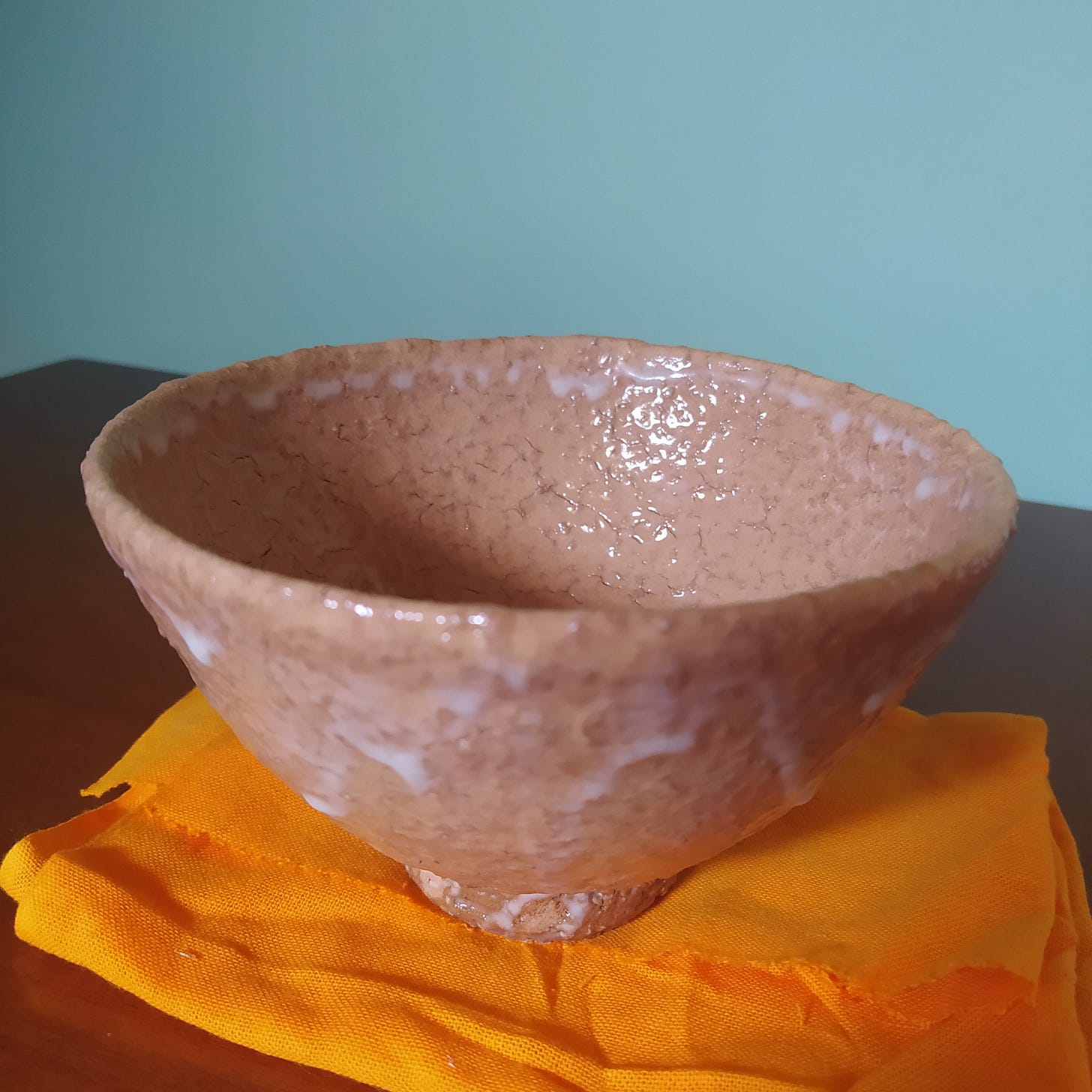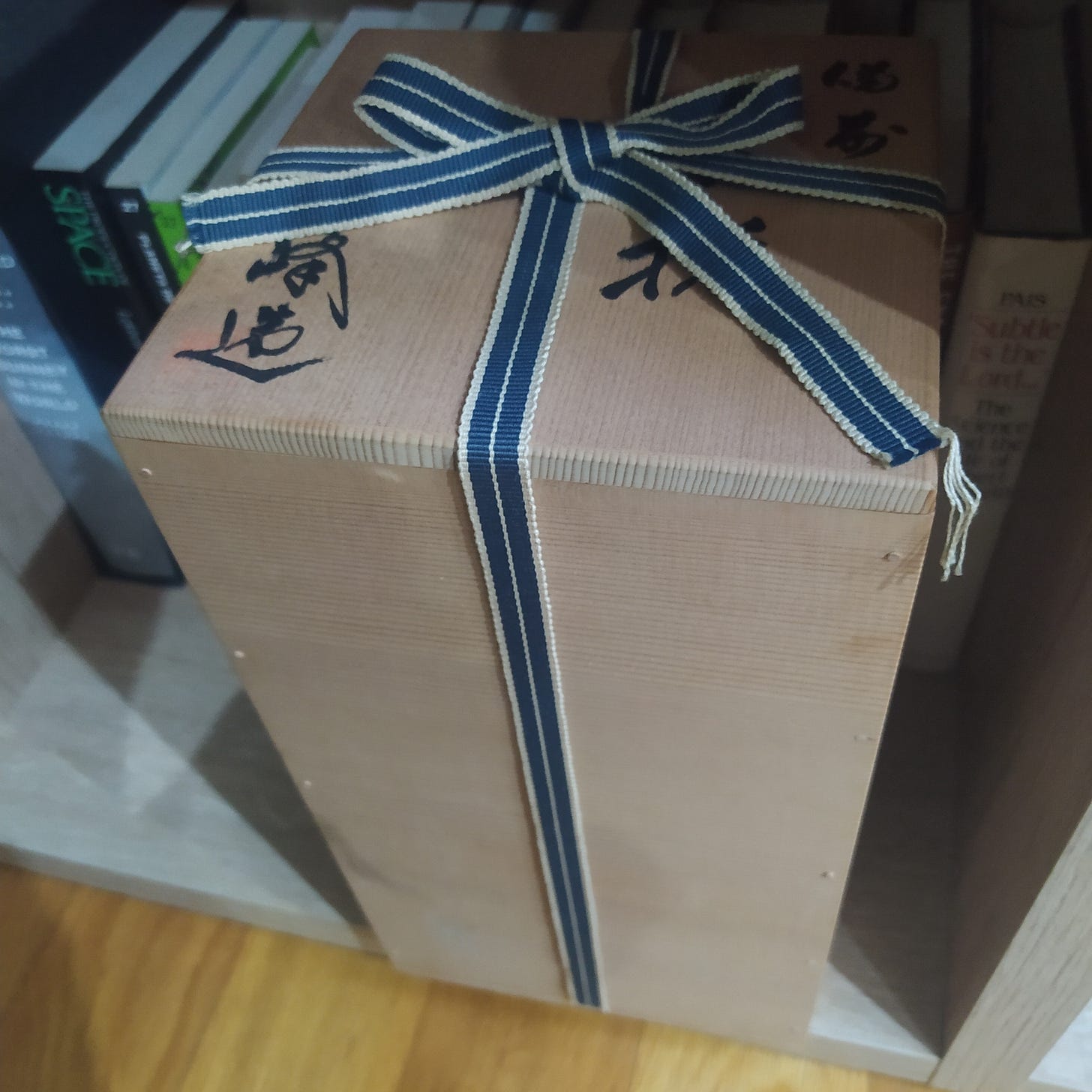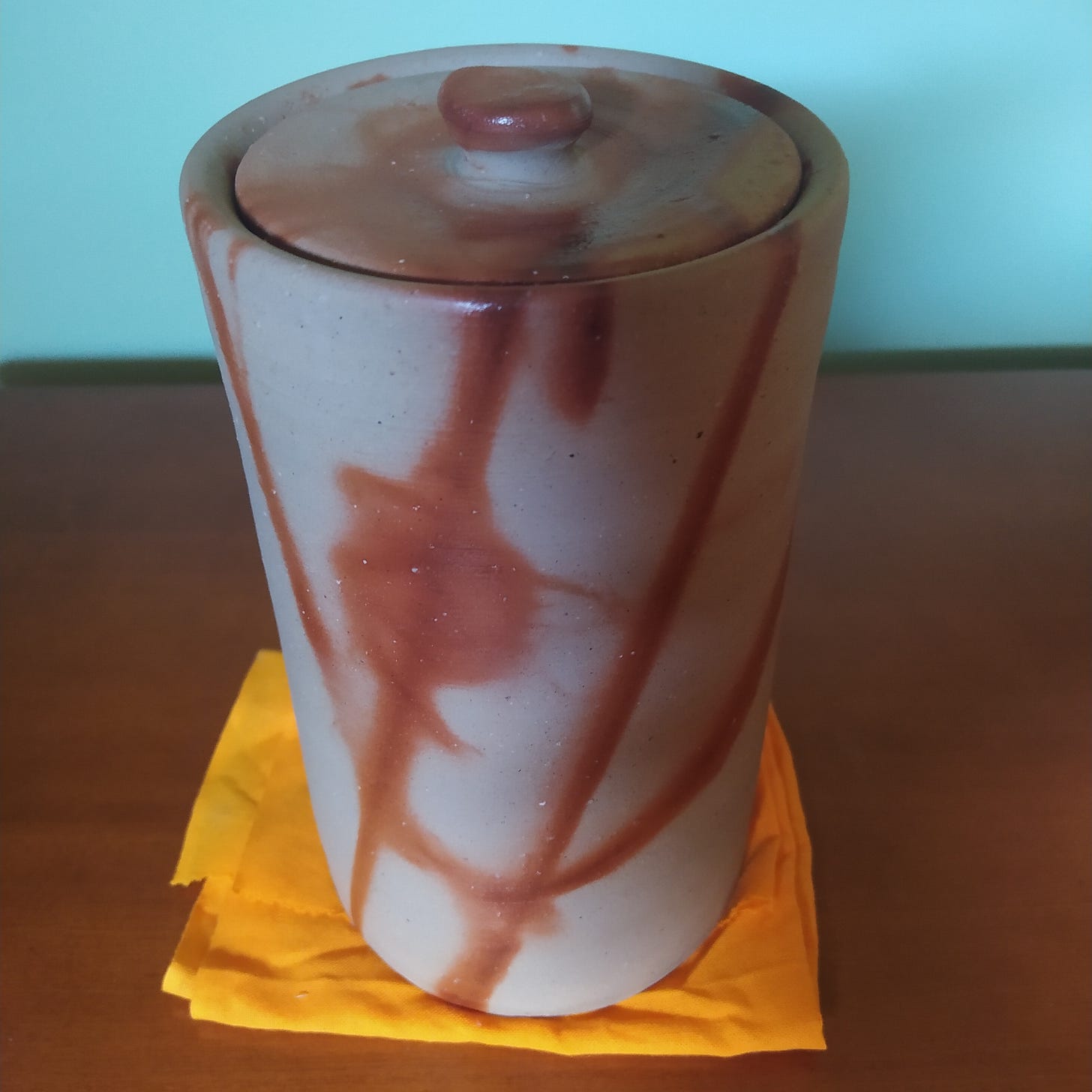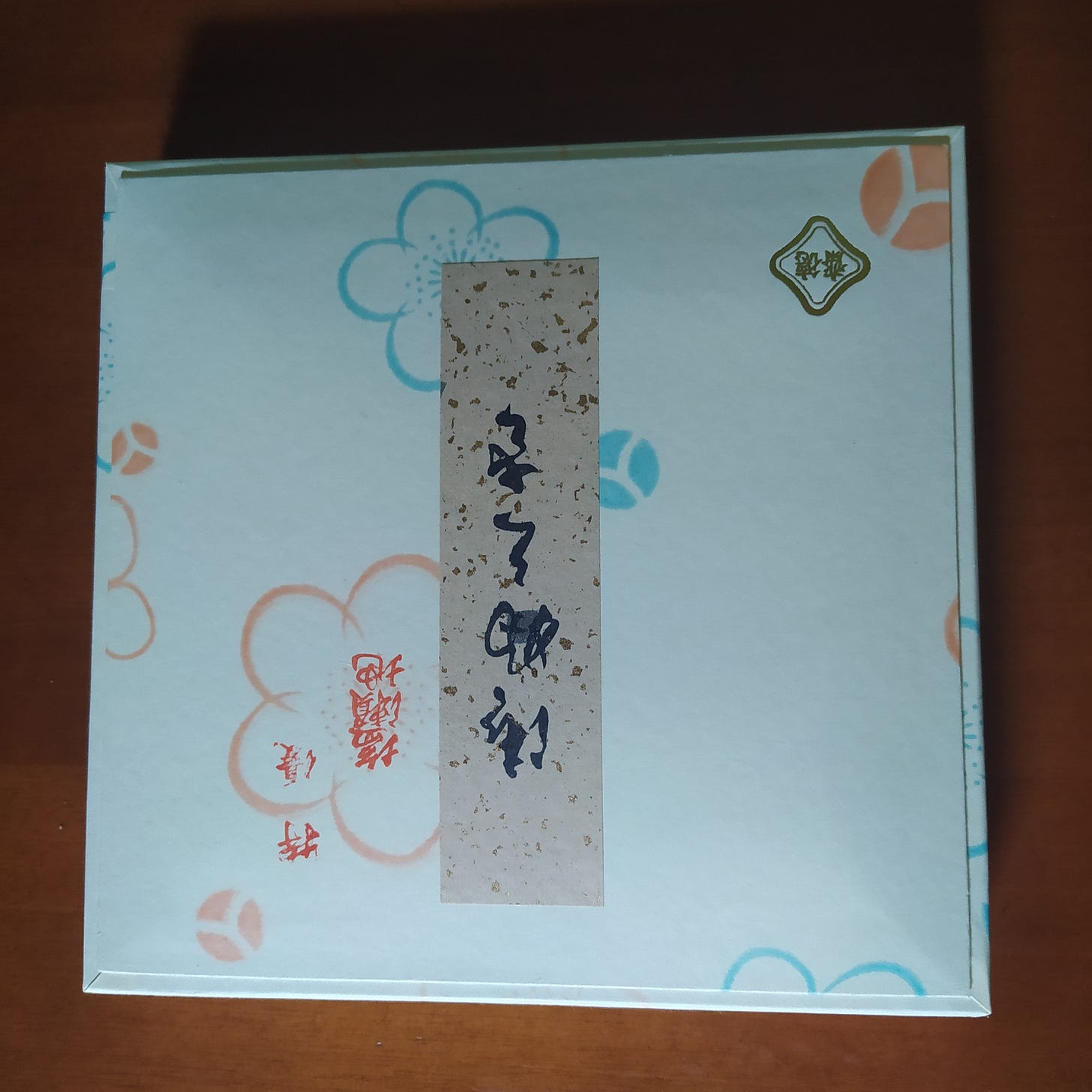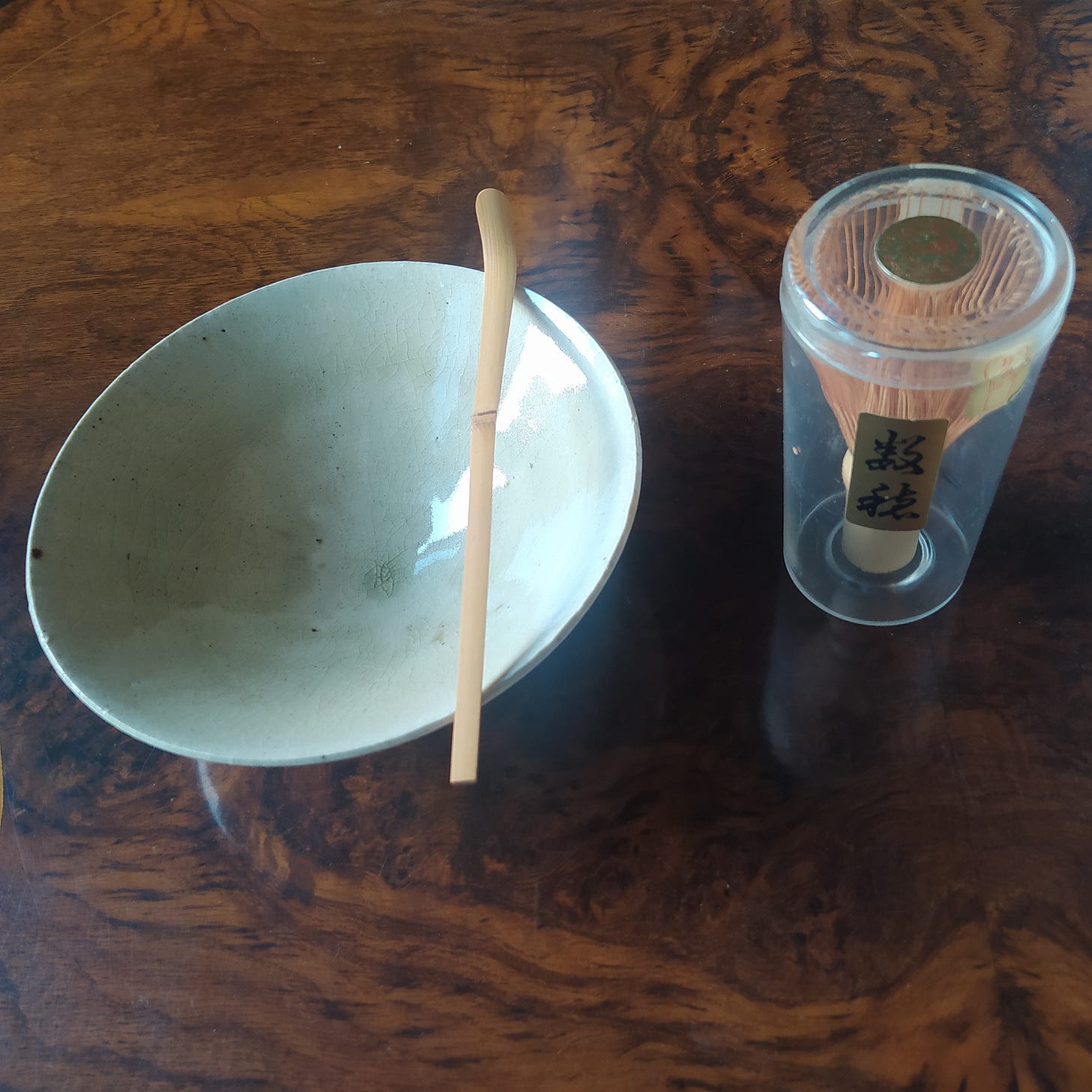日本で買った茶道具は私の宝物です
or "The tea utensils I bought in Japan are my treasures"
It is no secret to readers of this substack that I am really keen on the Japanese Tea Ceremony. Last month I bough some chadogu which I hope I will be able to use in the future, but even before that, they are objects of beauty themselves, the results of polished craftsmanship and worthy of aesthetic appreciation in themselves. I thought I would share them with you.
This is a chawan, ideally suited for usucha (thin tea). It is an example of Hagi-yaki pottery, the traditional ware of Yamaguchi prefecture since feudal times, when most of it was ruled by the Mori clan from their seat in the town of Hagi. It presents the Korean-borrowed Oido (‘big well’) shape, biwa glaze and sugary white slip. It was made by Takashi Mashita and contained in a box signed by Zen Master Sekio Fukumoto. I got it fom a seller in Hofu.
This is a mizusashi, the cold water contained that is used to refill the kama (kettle) during chanoyu. It’s a very good example of Bizen-yaki, the traditional ware of Okayama prefecture, made around 40-50 years ago by noted potter, Kimura Toho. Bizen-yaki is a really ancient pottery - one of the ‘six ancient kilns of Japan- and characterized by a robust, no-nonsense, unadorned simplicity which highlights the iron-rich local clay which accepts of no glazing. Instead, similar effects are produced in the kiln by ash melting or, in this case, by employing the hidasuki technique, in which the piece is placed in a box and wrapped in straw which, when consumed, generates the flame-like images on the vessel.
This is a fukusa, the silk cloth that is used for ritually purifying some of the implements during the Tea Ceremony. Purple is the usual color for men, orange for women. This ‘Gokujo Fukusa’ is made by historic textile craft store Kitamura Tokusai in Kyoto, with 300 years of history producing textiles for chanoyu. It is made of the finest quality silk, and carefully hand sewn.
These chadogu were gifts, actually. The wooden bamboo spoon on top of the bowl is a chashaku, the tool used for getting the tea powder out of the tea container and putting it into the tea bowl. To the right is the chasen, the whisk you employ for mixing the tea powder with the water. They were given to my by my sister-in-law, Yasuko, who used them herself when she went to tea classes. The bowl was a present from Maki-sensei, the tea ceremony teacher I visited while in Japan. It is over fifty years old, and quite wide - a style she says used to be favored in tea bowls for men.




